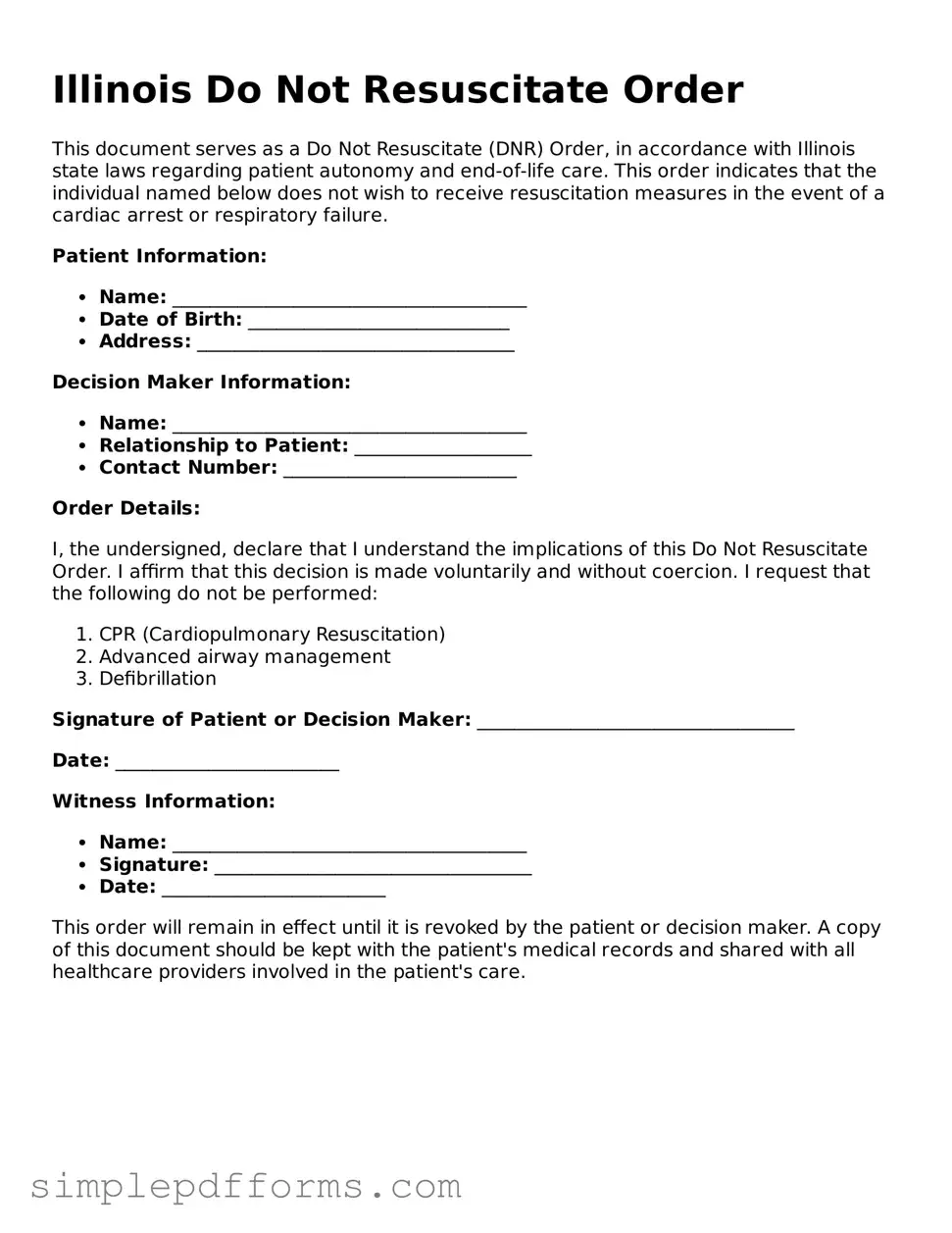When individuals fill out the Illinois Do Not Resuscitate (DNR) Order form, they often make mistakes that can lead to confusion or unintended consequences. Understanding these common errors can help ensure that your wishes are clearly communicated and respected. Here are ten mistakes to avoid when completing this important document.
One frequent mistake is not discussing the DNR order with family members or healthcare providers before filling it out. Open conversations about end-of-life wishes can clarify intentions and prevent misunderstandings later. Without this dialogue, loved ones might be unaware of the individual’s preferences, leading to emotional distress during critical moments.
Another common error is failing to sign and date the form. A DNR order is not valid unless it is properly executed. Neglecting to include a signature or date can render the document ineffective. Always double-check that all required sections are completed, as this ensures that the order will be honored by medical personnel.
People sometimes overlook the importance of having the form witnessed or notarized. In Illinois, a DNR order must be signed by a physician and either witnessed by two individuals or notarized. Skipping this step can lead to complications when the order is needed. It is essential to follow the proper legal requirements to avoid issues in emergency situations.
Another mistake involves using outdated forms. Regulations and requirements can change, and it is crucial to use the most current version of the DNR order. Using an old form may result in confusion among healthcare providers who may not recognize it as valid.
Individuals may also fail to provide copies of the DNR order to relevant parties. It is important to distribute copies to family members, healthcare proxies, and medical facilities. Without these copies, there is a risk that the order will not be honored when it is most needed.
Sometimes, people do not clearly articulate their wishes on the form. Ambiguities can lead to misinterpretation by healthcare providers. It is vital to be explicit about what the DNR order entails to ensure that your preferences are understood and followed.
Another mistake is neglecting to review the DNR order periodically. Life circumstances change, and so can a person's wishes regarding resuscitation. Regularly revisiting the document ensures that it still reflects current preferences. This proactive approach can prevent confusion in the future.
People may also forget to inform their healthcare providers about the existence of the DNR order. Even with a completed form, if a doctor or medical facility is unaware of it, the order may not be honored. Communication with healthcare professionals is key to ensuring that your wishes are respected.
Additionally, individuals sometimes assume that a DNR order applies in all situations. However, a DNR order specifically pertains to resuscitation efforts in the event of cardiac or respiratory arrest. It does not affect other medical treatments. Understanding this distinction is crucial for ensuring that appropriate care is provided.
Lastly, some individuals fill out the form under pressure or without fully understanding its implications. Taking the time to reflect on the decision and seek guidance can help clarify one's wishes. This careful consideration can lead to a more thoughtful and effective DNR order.
